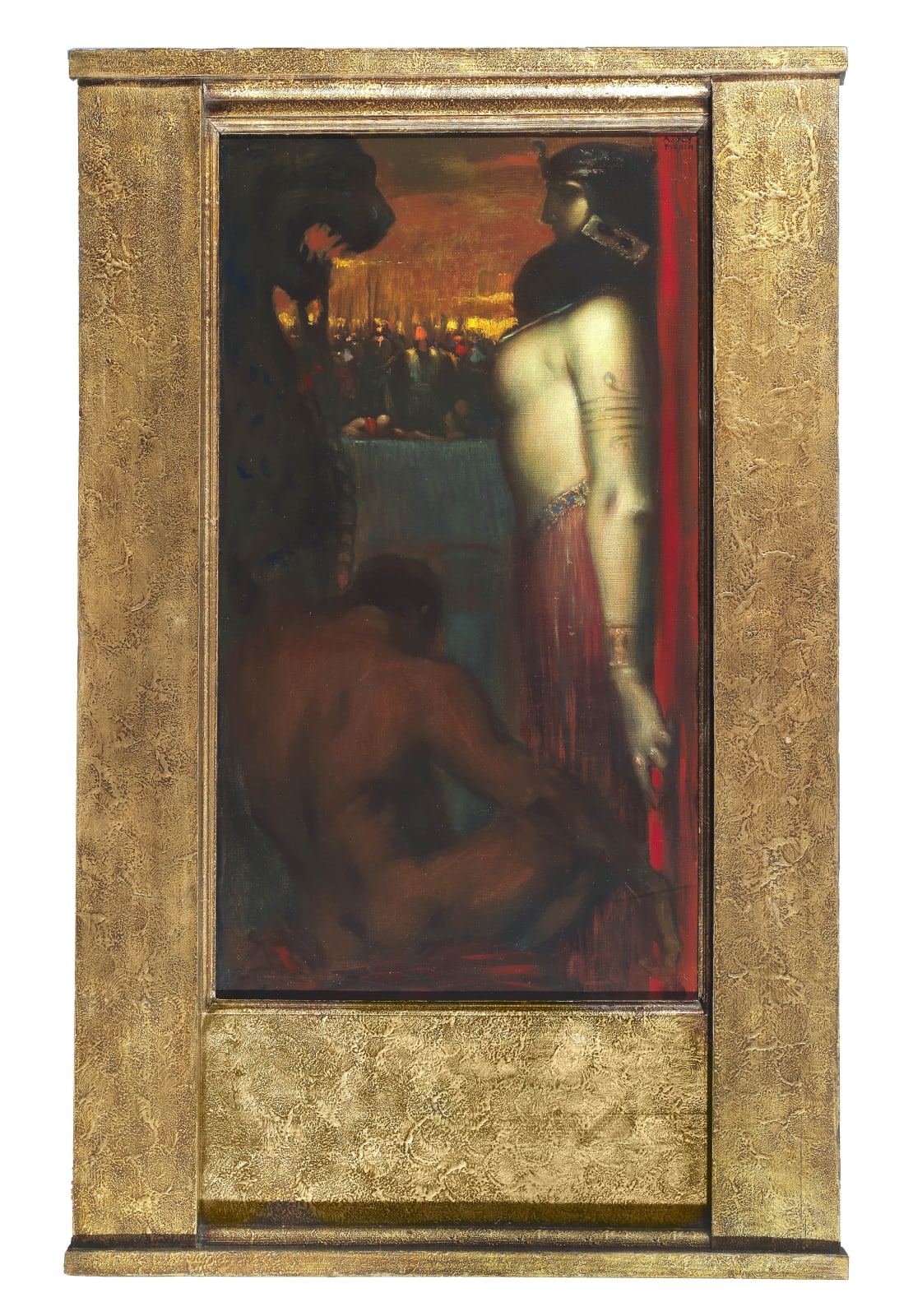Adolf FREY-MOOCK Switzerland, 1881-1954
This painting, signed upper right A. Frey Moock, bears an inscription in pencil on back of the frame with the title “Simson u. Delila”.
In the story of Samson and Delilah, taken from the Old Testament (Judges 13 to 16), Samson is described as an Israelite hero in the struggle against the Philistines, who dominated Palestine at the time. He was a "Nazarite", in other words a man consecrated to God from birth, and as such he was forbidden ever to cut his hair. But the strong and invincible Samson was tricked by the young Delilah, a Philistine woman paid by his enemies to discover the secret of his astonishing strength. She guessed that it lay in his long hair and so one night she shore off his locks while he slept. Now weak and unable to defend himself, he fell into the Philistines' hands.
He was captured, blinded and clapped in irons. But after he had been bound to the columns of the temple he recovered his strength and caused the temple to collapse, famously crying out: "Let me die with all the Philistines!"
In Frey-Moock's painting Samson is shown with a shaven head, now devoid of all strength, at Delilah's feet. A lion that appears to emerge from his own body looms over him, holding one of his seven shorn locks in its mouth as though it were showing us the reason for his weakness. In the background, a crowd of indistinct figures, the Philistines, seem ready to intervene at any moment in order to capture Samson.
But the image which appears most distinctly and which emerges from the rest of the painting is that of the beautiful and sensual Delilah. The figure of the woman, erect and still, her body almost sculptural, is reminiscent of that in another work by Frey-Moock dated 1910, entitled "Salome with the Head of John the Baptist".
The theme of Samson and Delilah is one to which many painters, including Guercino, Rubens and Van Dyck, have turned over the centuries.
The concept of woman mocking man, competing with him in cunning and cruelty and winning the day with the invincible weapon of seduction, has lured artists of every age, from Böcklin and Stuck to Klimt. In Frey-Moock's interpretation, the female figures acquire a disturbing, almost evil quality.
This was the age of the Sezession in Munich, which was still imbued with the spirit and sensuality of the decadent movement but which freed painting and its figures from the conventions and prejudices of 19th century bourgeois society through Symbolism and the depiction of allegorical scenarios.
In Frey-Moock's painting we find the full panoply of German Symbolism, ranging from the characters and their evocative quality to a dark tonality interrupted by a few flashes of colour. In particular, we find echoes of one of German Symbolism's greatest figure, Franz von Stuck, to whom Frey-Moock was both pupil and assistant and to whose charm and influence he was especially sensitive. In his search for a subject he was almost certainly inspired by Saint-Saëns' opera Samson et Dalila, which was performed for the first time at the Grand Ducal Theatre in Weimar on 2 December 1877 in response to an invitation from Franz Liszt, the theatre's director, and which was to prove immensely popular.
JOIN OUR MAILING LIST
Subscribe to our mailing list in order to receive news on new acquisitions, exhibitions, special previews and more!
* denotes required fields
We will process the personal data you have supplied to communicate with you in accordance with our Privacy Policy. You can unsubscribe or change your preferences at any time by clicking the link in our emails.
